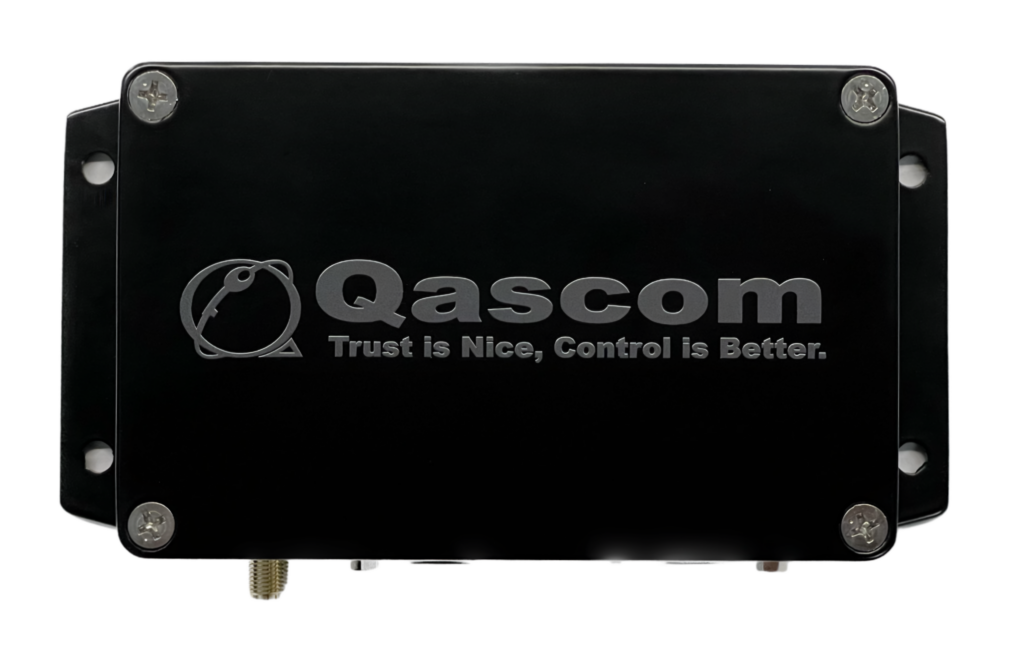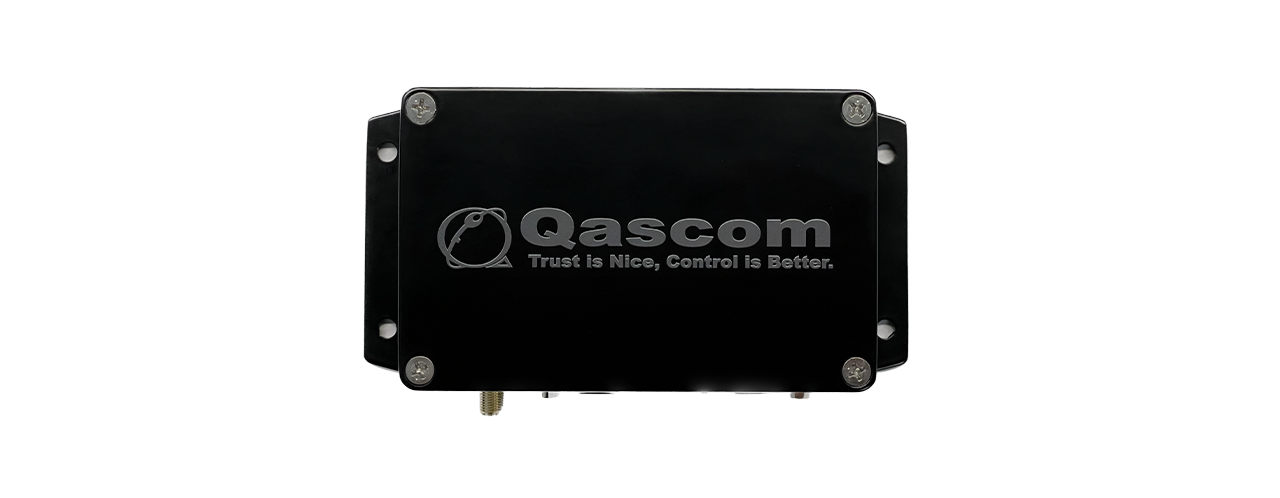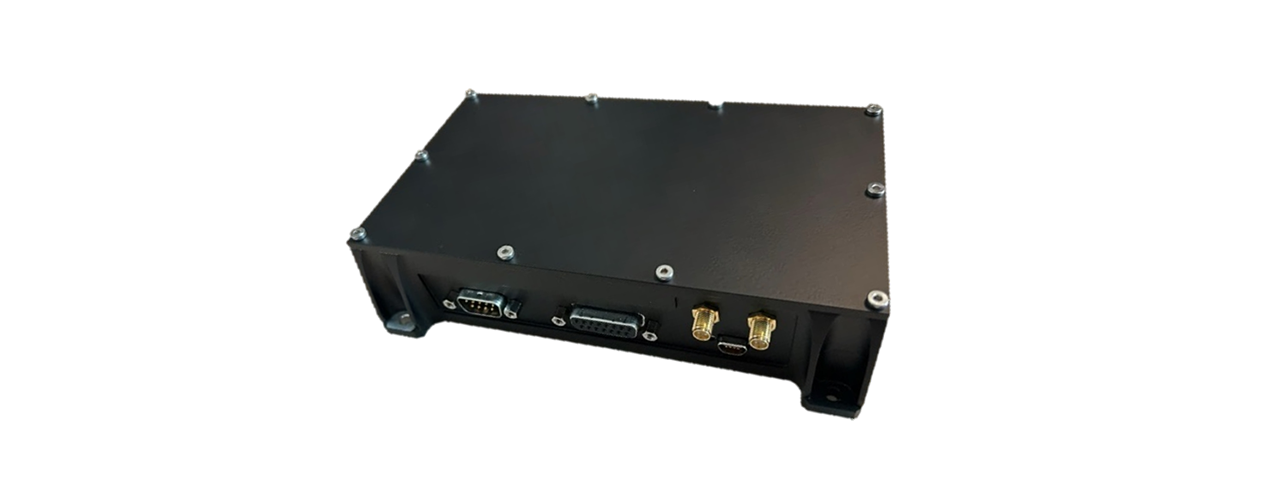Receivers
GNSS Receivers for Robust Navigation
Qascom offers a following product line for GNSS space receivers:
The space GNSS receiver’s product line includes the QN400-S and QN500-S. GNSS space receiver technology is flight-proven on different missions and has been selected by NASA and ASI (Italian Space Agency) for the Lunar GNSS Receiver Experiment (LuGRE) on the Firefly Blue Ghost Mission 1 (BGM-1).
Space Receivers

QN400-S
QN400-S is a multi constellation (GPS and Galileo) and dual frequency Ll/L5 GNSS receiver qualified for LEO, Launchers and Commercial Moon Missions. QN400-S is a compact and low cost product for “New Space” applications that require robust Position, Navigation and Time, Space Cybersecurity and the flexibility of a Software Defined Radio Solution.

QN500-S
QN500-S is a multi-constellation (GPS and Galileo) and three frequency El/E5/E6 GNSS receiver representing the ideal product for “New Space” applications requiring High Reliability, Cybersecurity and Robust PNT in Space. Thanks to Software Defined Radio (SDR) Technology it supports navigation of Multiple Missions from Launchers, to LEO/GEO and Deep Space. The receiver architecture is based on three modular boards: an RF board, a Digital board and Supervisory board based on Radiation Tolerant components. The target lifetime of the product in LEO is 5-7 years.
QN400-S
Robust GNSS Receiver for Space

QN400-S is a multi-constellation (GPS and Galileo) and dual frequency Ll/L5 GNSS receiver qualified for LEO, Launchers and Commercial Moon Missions. QN400-S is a compact and low-cost product for “New Space” applications that require robust Position, Navigation and Time, Space Cybersecurity and the flexibility of a Software Defined Radio Solution.
Application Areas
- Robust Position Navigation and Timing for LEO satellites.
- High Dynamic Navigation for Launchers.
- Precise Orbit determination using Dual Frequency data and Orbital Filter.
- Moon Navigation.
Specification
System Type
Receiver
Physical Characteristics
Size: 140 x 90 x 35 mm.
Weight: 480 g.
Front-end gain: 0-66 dB.
Antenna Voltage: 3.3 or 5V.
Input Voltage: 9-36 VDC.
Power Consumption: 12,5W typ.
Operating Temperature: -45° C / +60° C.
Humidity: 95% (non-condensing).
GNSS Characteristics
GPS: LICA, L5.
Galileo: E1 BC, E5a.
Galileo Services
E1 OSNMA.
External Interfaces
Power and Comm: RS422-DB9.
Comm: Ethernet – DB15 (Optional).
RF: SMA Female.
Data Format: QN400 Binary Format.
Available Software Plugins
LEO On-board Dual Frequency Precise Orbit determination.
Galileo OSNMA.
High Dynamics Navigation.
Other Software Features
Support to Real-time processing and IQ samples capture.
Radiation Tolerance and Mitigation (Software).
Support to inglight Incremental SW Update.
Performance
PVT Solution Position 3D RMS < 3 m.
PVT Solution Velocity 3D RMS < 0.15 m/s.
POD Solution Position 3D RMS < 1 m.
POD Solution Velocity 3D RMS < 0.1 m/s.
Timing Accuracy: 50 ns.
TTFF Warm/Cold start: 60s/200s.
Tracking Sensitivity: 20 dB-Hz.
Acquisition Sensitivity: 23 dBHz.
48 Channels.
QN500-S
The New Frontier of GNSS Cybersecurity in Space

QN500-S is a multi-constellation (GPS and Galileo) and three frequency El/E5/E6 GNSS receiver representing the ideal product for “New Space” applications requiring High Reliability, Cybersecurity and Robust PNT in Space. Thanks to Software Defined Radio (SDR) Technology it supports navigation of Multiple Missions from Launchers to LEO/GEO and Deep Space. The receiver architecture is based on three modular boards: an RF board, a Digital board and Supervisory board based on Radiation Tolerant components. The target lifetime of the product in LEO is 5-7 years.
Application Areas
Robust Position Navigation and Timing for LEO satellites.
Space Cybersecurity based on Galileo ONSMA and Receiver Based Antispoofing.
High Dynamic Navigation for Launchers.
Precise Orbit determination using Dual Frequency data and Orbital Filter.
Moon Navigation.
Specification
System Type
Receiver
Physiscal Characteriscs
Size: 180 x 110 x 42.5 mm.
Mass: O.923 Kg.
Voltage: 24-34 VDC (unregulated).
External Antenna/LNA power Output: 5V.
Power Consumption < 15 W.
Operating Temperature: -45° C/+60° C.
GNSS Characteristics
GPS L1CA , Galileo E1 BC.
GPS L5, Galileo E5a.
Galileo E6 Ready.
External interfaces
TC/TM: RS422 and SpaceWire.
RF: SMA Female.
REF IN/PPS OUT: SMA Female.
Data Format: QN500 Binary Format
Hardware
Modular HW design with RF, Digital and Supervisory board.
Supervisory board with Rad Tolerant components that supports redundant architectures.
2x Antennas Inputs.
Up to 3 Configurable GNSS Frequencies.
Target lifetime: 5-7 years.
Available software plugins
LEO On-board Dual Frequency Precise.
Orbit determination.
Galileo OSNMA.
High Dynamics Navigation.
Frequency Interference Monitoring, Detection and Exclusion based on sub-band power monitoring (L 1, L5) and blanking interferent events.
Anti-spoofing based on El OSNMA and receiver-based techniques.
Other software features
Support to Real-time processing and IQ samples capture.
Radiation Tolerance & Mitigation (Software).
Support to Inflight Incremental SW Update.
Support for Assistance Data from Ground (Ephemeris).
SDR Core
FPGA Firmware.
CPU Software.
Anti-radiation memory corruption SW techniques.
Support to Real Time and Ground Snapshot processing.
Support for Assistance Data from Ground (Ephemeris).
GNSS Supported Signals
GPS L5, Galileo E5a
Galileo E6 Ready
GNSS Data
Measurement rate: 1-20 Hz
Navigation Solution rate: 1-20 Hz
Data Format: QN400/QN500 Binary Data
ACQ (Acquisition Correlators)
RAW (Pseudo range, Doppler, Carrier Phase, C/N0 Observations)
NAV/POD (ECEF or ECI Position)
ENA (Assured PVT)
IQS (Baseband IQ samples)
LOG (Receiver Status information and Diagnostics)
BITS (Navigation Message)
STA (Channel Status Information)
SIN (Security Information Message)
Performances
PVT Solution Position 3D RMS < 3 m.
PVT Solution Velocity 3D RMS <0.15 m/s.
POD Solution Position 3D RMS < 1 m.
POD Solution Velocity 3D RMS < 0.1 m/s.
Timing Accuracy: 50 ns.
TTFF Warm/Cold start: 60 s/200 s.
Tracking Sensitivity: 20 dB-Hz.
Acquisition Sensitivity: 23 dBHz.
48 Channels.
